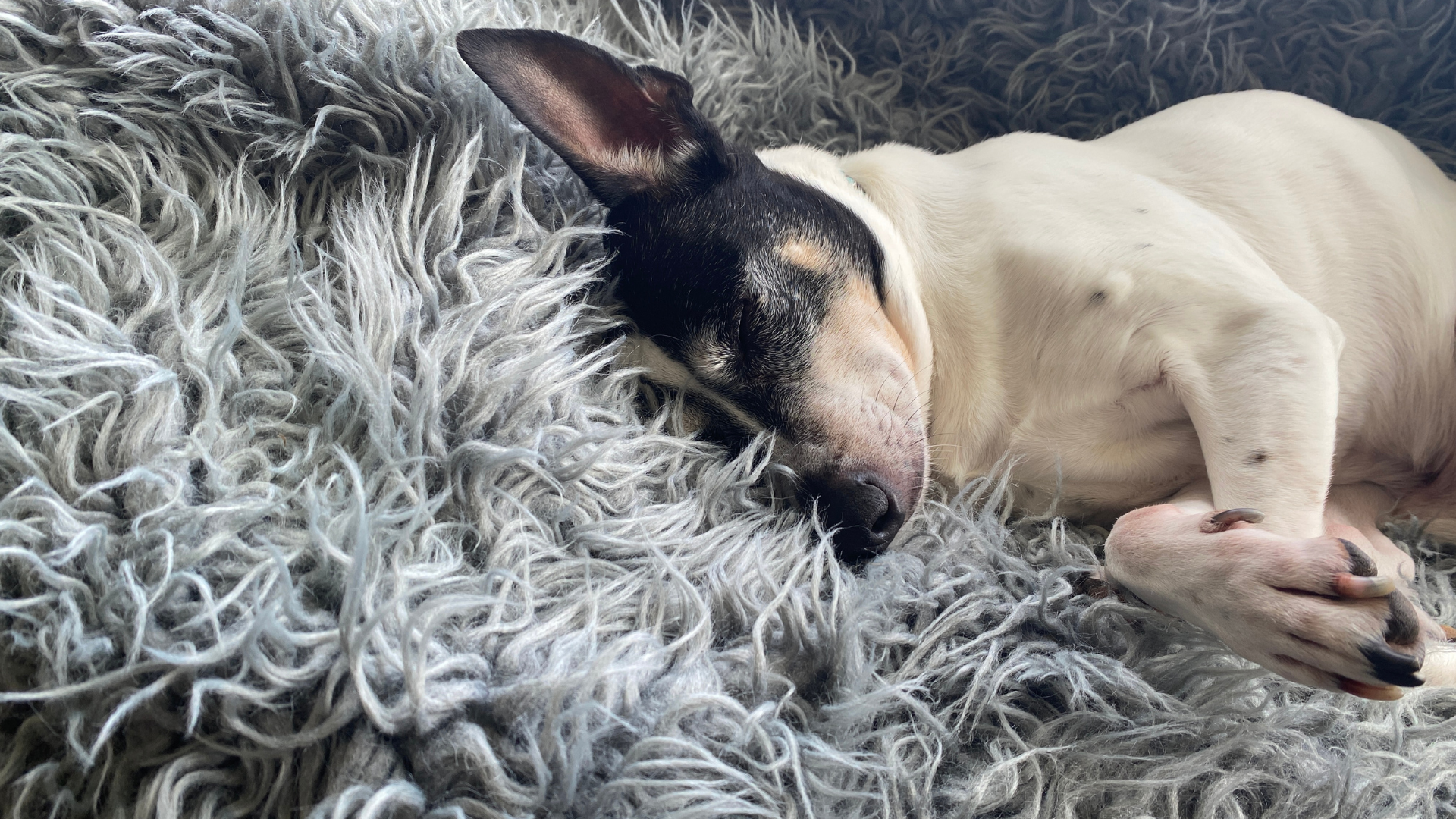
The missing piece of the puzzle.
Why a Dynamic Dog Assessment?
There is a HUGE correlation between PAIN and BEHAVIOUR, but unfortunately pain can be really hard to identify - even for professionals.
Why is pain the name of the game?
It's not always a limp or a whine! Pain related behaviour is extremely complex. Dogs don't often show that they are in discomfort in ways we would usually expect, it is often subtle and goes unnoticed for weeks, months and even years!
As a Dynamic Dog Practitioner I can confidently spot potential signs of discomfort and relay them to your vet so that you and your dog find relief sooner, whilst simultaneously helping you manage your dogs behaviour.
Why wait for your dog to go lame, before you consider if they are in pain?

Behavioural changes you may have noticed:
Separation Anxiety
Reactive towards other dogs
Fearful of children
Has stopped playing
Reluctant to go on walks
Chew on paws or forelimbs
Sound sensitivity
Resource guarding
Doesn’t like to be touched or picked up
Hesitant going up or down stairs
Needs help getting in/out of the car
Restless at night - unable to settle
These behaviours are often attributed to dogs in their senior years, but can actually affect ANY dog - at ANY age…often due to undiagnosed pain.
What’s Involved:
Part 1: Deep Dive Consultation
We start with a 90-min zoom call, taking a Deep Dive into every aspect of your dog’s life - from medical history to what they like to do for fun! This consultation forms the foundation for your dog’s Dynamic Dog Assessment.
Part 2: Photo & Video Evidence
After our Deep Dive you have 2-3 weeks to collect the photo and video evidence required for the assessment. This can be a little time consuming (we need to get the right shots at just the right angle), but I break it up into EASY to MANAGE assignments that can be completed solo if you live on your own. All you need is a smart phone…and maybe a tripod.
Evidence required range from static poses (stand, sit, down), gait analysis (walk and trot if possible), and daily living activities such as navigating stairs, getting on and off the couch, pooping, playing etc…
Part 3: Dynamic Dog Assessment & Vet Report
Once evidence has been submitted (normally via a shared google drive) I then spend 4-6 hours going though all the photos and videos you’ve sent me, assessing your dog’s posture, gait and movement through daily activities - looking for indicators of pain/discomfort. All my findings are then put into a detailed report for you and your veterinarian.
Part 4: Follow Up Consultation
Once the report has been completed we’ll then do a 30 min follow up zoom call. I’ll go through the findings of the report, answer any questions you may have, and make recommendations for any home & lifestyle adaptations.
Your Dynamic Dog Assessment
What’s Included:
90 min Deep Dive Consultation
Your Dynamic Dog Assessment
Detailed Veterinary Report
30 min Review & Follow Up
Veterinary Liaison on request
What you’ll learn:
✓ Identified areas of pain/discomfort
✓ Lifestyle adaptations to reduces stress, anxiety & discomfort
✓ How to advocate for your dog - both at home and at the vet clinic
Only $295 CD
Your Senior Dog Services are designed to compliment the work you do with your Veterinary Team. I can not diagnose medical conditions, or comment on specific pharmaceutical medications.
Questions I’m often asked:
-
No, only your vet can do that - but I can help point them in the right direction when it comes to looking for sources of pain or discomfort.
A Dynamic Dog Assessment provides a detailed account of your dog's history, behavioural concerns, and a FULL ANALYSIS of your their posture, gait and movement through daily activities, listing any abnormalities and possible causes of pain or discomfort.
This gives your vet as much information as possible so they can make a diagnosis.
-
No. If your dog is in pain, the addition of a "stranger" in their environment (even if they have a pocket full of treats) will affect how they behave...especially if they're fearful or reactive around new people.
We want your dog to feel completely comfortable, and able to "be themselves" while you collect the photos and videos required for the assessment.
A second pair of hands can come in handy - but all of your assignments can be completed solo.
-
Unfortunately not. Your dog's medical needs are very specific to them, and their rehab should be tailored accordingly, with progress monitored by a professional.
Your veterinarian will be able to provide you with the referrals needed depending on your dog's needs.
Saying that, I do have a list of online resources available for dog's who are fearful of being handled in a clinical setting, or for clients who live in remot locations.

